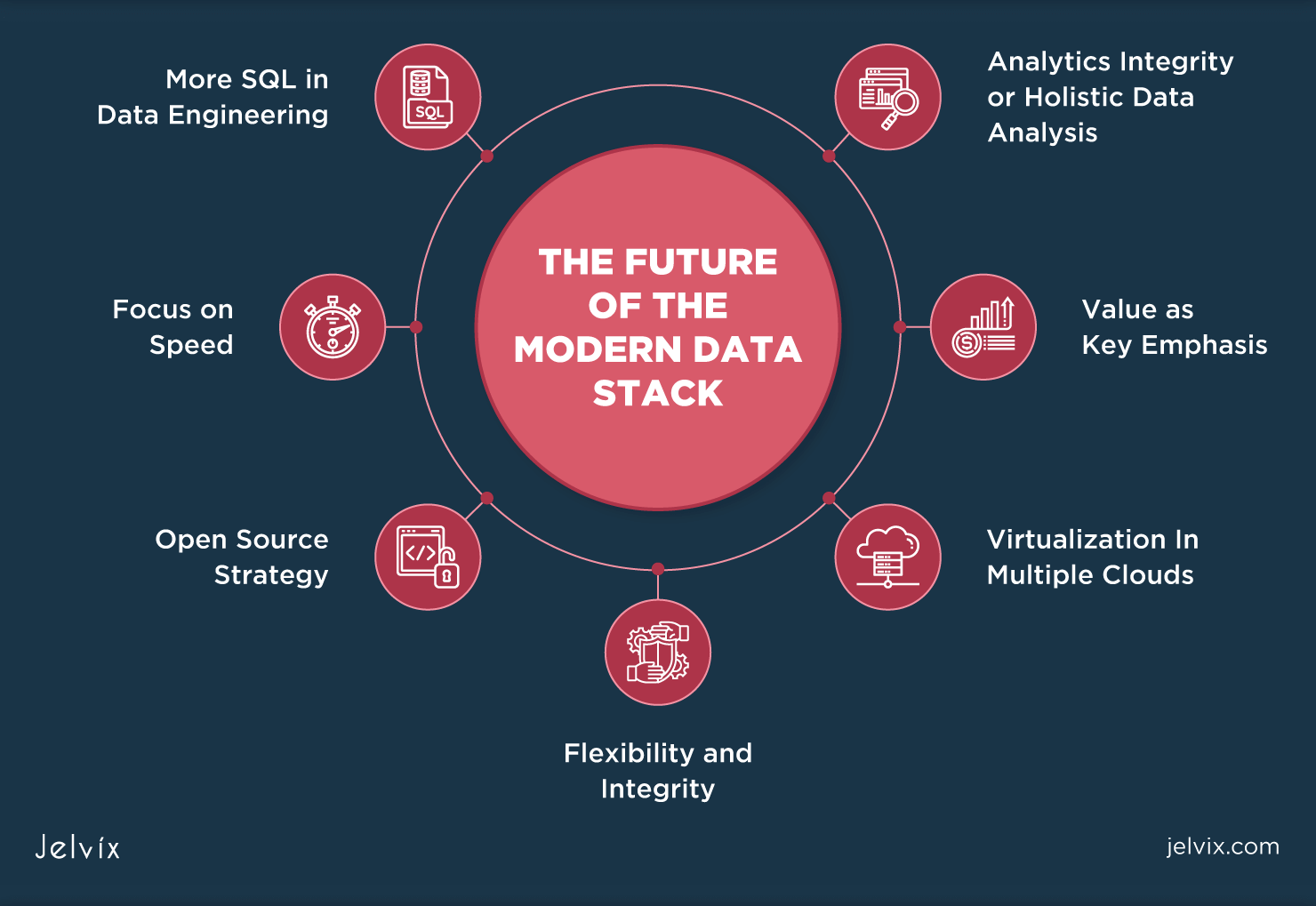The Modern Data Stack: Revolutionizing Data Management
 digitalera
digitalera
Introduction to the Modern Data Stack
In the contemporary digital era, the modern data stack has emerged as a transformative framework for managing and utilizing data. As organizations increasingly rely on data-driven insights, the modern data stack provides a robust, scalable, and efficient approach to handle vast amounts of data. This article delves into the components, benefits, and implementation strategies of the modern data stack, offering a comprehensive guide to understanding its pivotal role in today's data-centric landscape.
Understanding the Modern Data Stack
The modern data stack is a collection of tools and technologies designed to streamline data collection, storage, processing, and analysis. It encompasses a range of solutions that work in harmony to ensure data is easily accessible, highly reliable, and readily analyzable. The key components of the modern data stack include:
1. Data Ingestion Tools
Data ingestion tools are the first step in the modern data stack. These tools facilitate the extraction of data from various sources, including databases, applications, and external services. Popular data ingestion tools include Apache Kafka, Fivetran, and Stitch. These tools ensure seamless data flow into the data warehouse, providing a solid foundation for subsequent processes.
2. Data Warehousing Solutions
At the core of the modern data stack lies the data warehouse. Data warehousing solutions like Snowflake, Amazon Redshift, and Google BigQuery offer scalable storage and fast query performance. These solutions enable organizations to store vast amounts of structured and unstructured data, making it readily available for analysis.
3. Data Transformation Tools
Data transformation tools are essential for converting raw data into a usable format. Tools like dbt (data build tool) allow data engineers and analysts to clean, transform, and model data using SQL-based transformation pipelines. This step ensures that the data is accurate, consistent, and ready for analysis.
4. BI and Analytics Platforms
Business Intelligence (BI) and analytics platforms are the final layer of the modern data stack. These platforms, such as Looker, Tableau, and Power BI, provide powerful visualization and reporting capabilities. They enable users to derive actionable insights from data, facilitating informed decision-making across the organization.
Benefits of the Modern Data Stack
The modern data stack offers numerous benefits that enhance the efficiency and effectiveness of data management and analysis:
1. Scalability
The modern data stack is designed to scale with the growing needs of organizations. Cloud-based solutions like Snowflake and BigQuery provide elastic scalability, allowing businesses to handle increasing data volumes without compromising performance.
2. Flexibility
With a wide range of tools and integrations, the modern data stack offers unparalleled flexibility. Organizations can choose the best tools for their specific needs, ensuring a customized solution that aligns with their data strategy.
3. Cost Efficiency
By leveraging cloud-based solutions, the modern data stack reduces the need for expensive on-premises infrastructure. Pay-as-you-go pricing models ensure that organizations only pay for the resources they use, optimizing cost efficiency.
4. Enhanced Data Accessibility
The modern data stack ensures that data is easily accessible to all stakeholders. With intuitive BI platforms and automated data pipelines, users can quickly access the information they need, fostering a data-driven culture within the organization.
Implementing the Modern Data Stack
Implementing a modern data stack requires careful planning and execution. Here are the key steps to ensure a successful implementation:
1. Define Your Data Strategy
Before diving into tool selection, it’s crucial to define your data strategy. Identify your organization’s data needs, objectives, and key performance indicators (KPIs). This will guide the selection of tools and the design of your data architecture.
2. Choose the Right Tools
Selecting the right tools is a critical step in building your modern data stack. Consider factors such as scalability, ease of use, integration capabilities, and cost. Popular tools to consider include Fivetran for data ingestion, Snowflake for data warehousing, dbt for data transformation, and Looker for BI and analytics.
3. Establish Data Governance
Data governance is essential for maintaining data quality and compliance. Implement data governance policies and procedures to ensure data accuracy, security, and privacy. Tools like Alation and Collibra can help manage data governance effectively.
4. Build Data Pipelines
Data pipelines are the backbone of the modern data stack. Develop automated pipelines to move data from source systems to the data warehouse, and from the data warehouse to BI tools. Ensure that these pipelines are robust, scalable, and capable of handling real-time data flows.
5. Train Your Team
Invest in training your team to ensure they are proficient in using the modern data stack tools. Provide ongoing education and resources to keep them updated on the latest trends and best practices in data management and analysis.
Challenges and Considerations
While the modern data stack offers numerous benefits, it also presents certain challenges and considerations:
1. Data Integration Complexity
Integrating data from multiple sources can be complex and time-consuming. Ensure that your data ingestion tools are capable of handling diverse data formats and sources.
2. Managing Data Quality
Maintaining high data quality is crucial for accurate analysis. Implement robust data quality checks and validation processes to ensure the integrity of your data.
3. Security and Compliance
Data security and compliance are paramount in the modern data stack. Implement strong security measures and ensure compliance with relevant regulations such as GDPR and CCPA.
Conclusion
The modern data stack represents a significant advancement in data management and analysis. By leveraging the right tools and strategies, organizations can harness the full potential of their data, driving innovation and competitive advantage. As the data landscape continues to evolve, staying abreast of the latest trends and technologies in the modern data stack will be essential for sustained success.
Subscribe to my newsletter
Read articles from digitalera directly inside your inbox. Subscribe to the newsletter, and don't miss out.
Written by